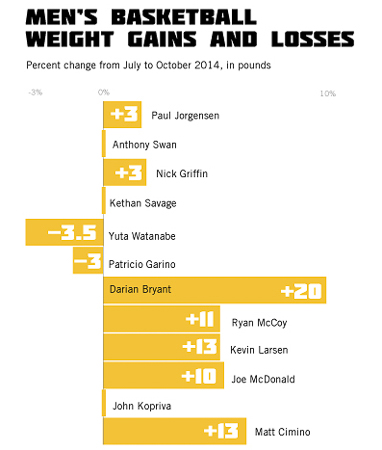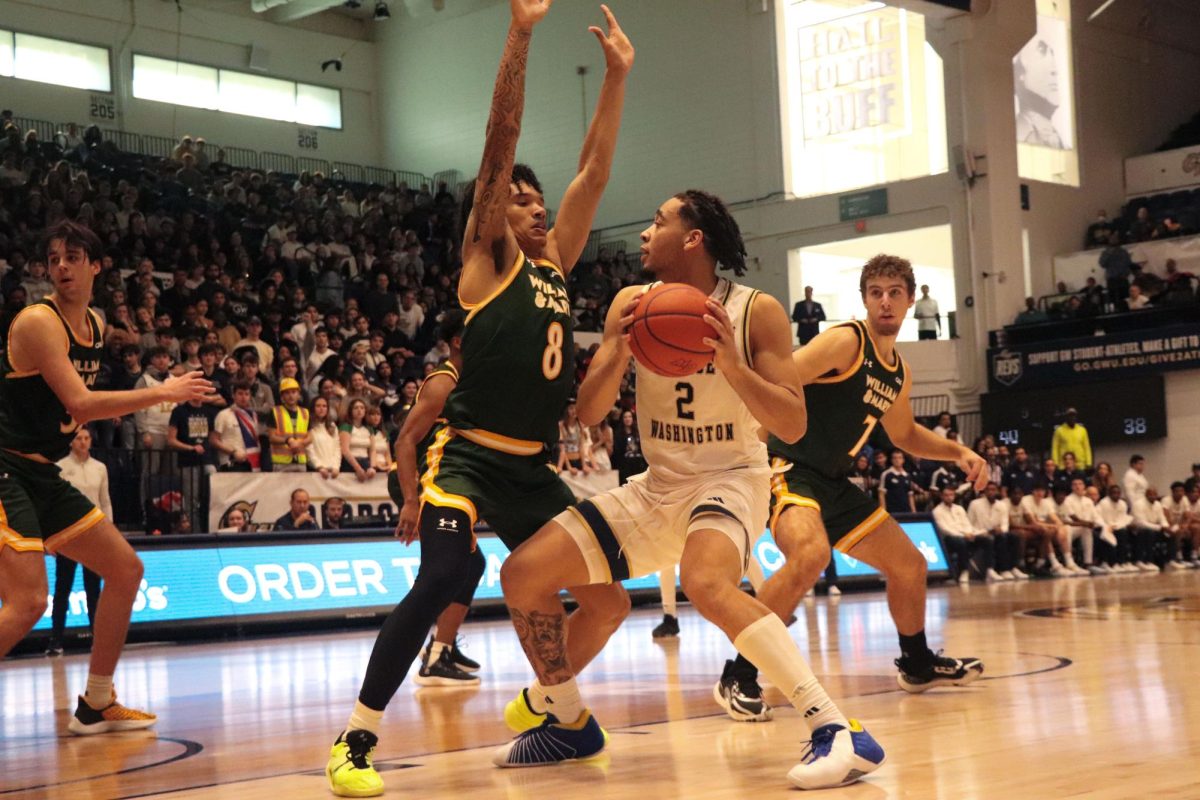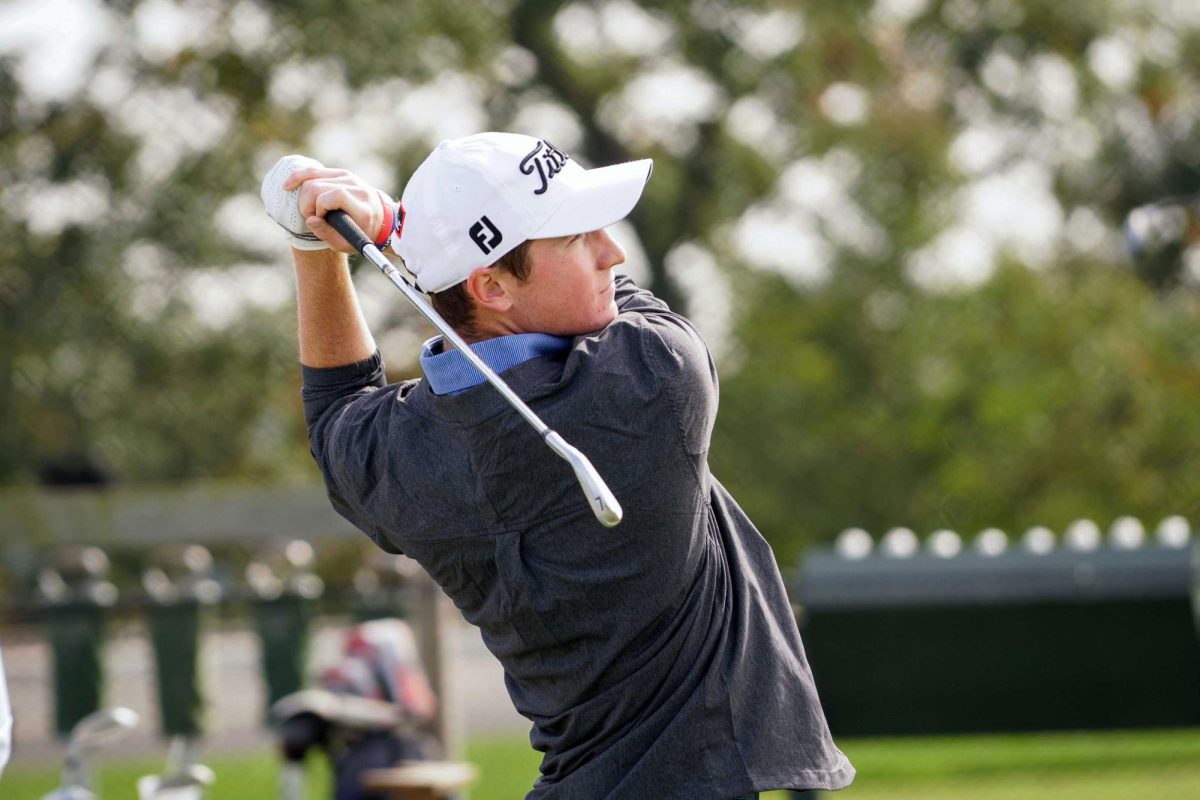Updated: Nov. 4, 2014 at 1:11 p.m.
Of the 33 games that men’s basketball played last season, only 12 featured the team active and at full strength.
While GW wasn’t necessarily plagued by injuries, crucial injuries to key players at different points in the season in some ways handicapped head coach Mike Lonergan, who was forced to play just six to seven players deep for most of the season.
If there’s one advantage the team has this year that it didn’t have last year, it’s a deeper, healthier roster. But to get there, strength and conditioning coach Matt Johnson was tasked during the offseason with ensuring returning players were in shape and putting muscle on what Lonergan has called the “skinniest” rookie class he’s ever had.
Johnson has a three-pronged philosophy: assessment, training and nutrition, with his top priority to create “technically proficient athletes.”
“The biggest thing for any athlete is that the focus really has to be on performance, and the work that we do in the weight room really translating to play,” said Johnson, who is in his second year at GW. “It’s not just about lifting, there’s also a focus on nutrition, a focus on assessment, and really trying to get a great look beneath the surface at what’s going on with the athlete.”
Better than a Band-Aid
Workouts were heavily based on rehabilitation and preventative exercises for returning players like juniors Kethan Savage, Patricio Garino and Joe McDonald, who were each injured and missed games at some point last year.
McDonald, who averaged 8.3 points, 4.6 rebounds and 4.1 assists, had surgery on his left hip during the offseason after playing most of the year injured.
“Coming off the surgery a lot of [my workouts] had to do with just getting stability, you know just getting my balance right. Once I finally got that down, I started working on jumping and landing,” McDonald said. “And now it’s more just doing everything at a very fast pace.”
Since he was listed as 184 pounds in July, McDonald, who appears to have markedly enlarged his shoulders and arms since last season, is now listed as 10 pounds heavier.
McDonald, junior Kevin Larsen and sophomore Nick Griffin all put on weight in the offseason.
Garino, who was selected to the Preseason All-Conference First Team and All-Defensive Team last month, played in just four of the opening 11 games of last season after fracturing a finger during practice.
“Personally I wanted to stay healthy, so with [Matt] Johnson, I did a lot of flexibility workouts and prevention for injuries,” Garino said. “Last year we all went through a lot of minutes on the court … so we worked on a lot of endurance, and we are still working on endurance in the weight room and on the court.”
Garino said he has a “love-hate” relationship with an endurance exercise in which Johnson has players run on an incline at different speeds for 20- to 30-second intervals.
Bulking up new talent
Weight has also been a focus this offseason, particularly for a lanky batch of newcomers.
Lonergan knows his rookie class needs to get stronger to compete at a high level in the Atlantic 10, with freshmen Yuta Watanabe and Anthony Swan both coming in taller than 6-foot-6 and lighter than 200 pounds. But the fourth-year head coach is not too concerned just yet.
“We try to put weight on [the freshmen], but we want to make it good weight,” Lonergan said. “Matt Johnson really thinks out of the box and is not just like a typical strength coach. I’m confident it will happen, it will definitely take time, especially for Anthony [Swan] and Matt Cimino … I wish it would happen overnight.”
They donned boxing gloves and weighted down vests for circuits or enhanced body weight exercises like inverted rows. But Johnson also said he went back to basics with the freshmen to build the type of physical foundation that can keep up with seasoned college players.
“They’re elite-level athletes, but a lot of them haven’t really been in a full spectrum strength and conditioning program,” Johnson said. “So a lot of the stuff we focus on is the basics. You know, how to grab the bar, how to get under a squat or pull-up, and a lot of technique-based things.”
The freshman who made the most notable changes this offseason was 6-foot-4 guard Darian Bryant. In the offseason, one of Lonergan’s top priorities was to have Bryant in shape and physically ready. He said Bryant could use the time to harden up and streamline his body in the same way Kevin Larsen had previously done in the offseason.
After being listed at 200 pounds in July, Bryant is now at 220 pounds and, though he didn’t lose weight the way Larsen did, has gained muscle. And Lonergan has said Bryant, along with Watanabe, is one of the most game-ready freshmen.
Lonergan has said how impressed he is with the physical changes players have undergone under Johnson, and Garino said that he himself is a model for how that change can take place.
“Well in [the freshmen] I see myself my freshman year because I think I was as skinny as them or even more skinny, but I’m not worried, that doesn’t mean they’re soft or anything,” Garino said. “Coach Johnson has put weight on them, they’re making them more flexible, more balanced, and everything is going to [translate] directly to the court, and I think they’re going to be fine.”
After the planks, curls and circuits of the offseason, Johnson is proud of how the players have responded to their training regimen and said he is hopeful the team can take some of the lessons from the weight room onto the court.
“[The team] is ready. I’m really proud of what these guys collectively did,” Johnson said. “I’m a big believer in every session trying to bring them out of their comfort zone at least 1 percent, and if we’re doing that, we’re getting better.”








